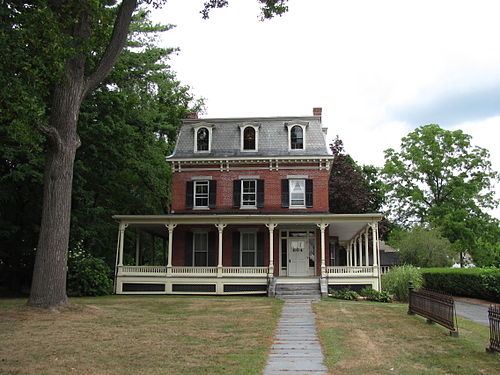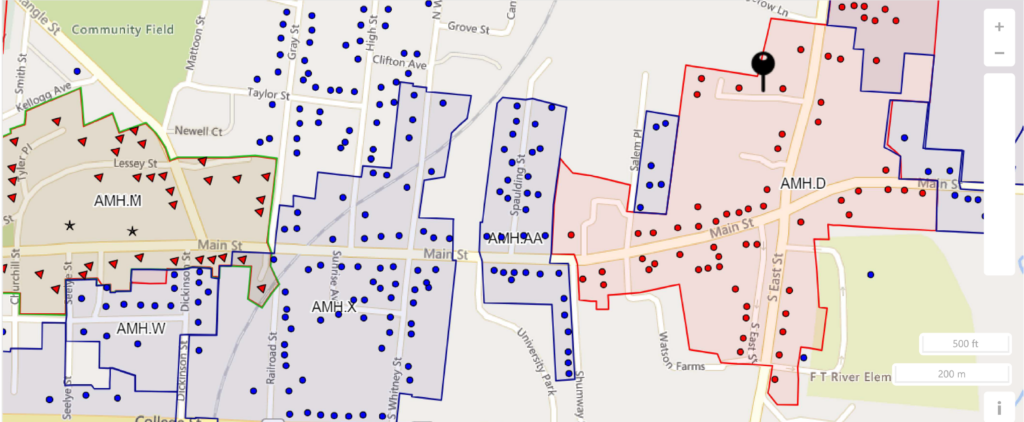Should There Be A Local Historic District In East Amherst?

Ithamar Conkey-Stevens House (1840) on the North Side of Main Street opposite Shumwy Street and part of the Amherst East Village National Historic District. Photo: Wikipedia
Report On The Meeting Of The Local Historic District Commission, June 13, 2023
This meeting was conducted over Zoom and was recorded.
Present
Nancy Ratner (Chair), Steve Bloom, Nicole Miller, Bruce Coldham, Karin Winter, and Betsy Sharpe
Staff: Nate Malloy (Senior Planner)
At the request of the Town Manager, the Local Historic District Commission (LHDC) discussed forming an East Amherst Local Historic District at its June 13 meeting. The area surrounding the East Amherst Common was the original town center before the current downtown to the west was developed. It was the second National Historic District in town, developed more than 40 years ago after the creation of the Emily Dickinson National Historic District. The Emily Dickinson Historic District was later designated a Local Historic District. The principal difference between the two being that the town has more rigorous control over changes to properties in a Local Historic District. National Historic Districts carry no protections from adverse developmental impact. There is a perception that the integrity of the area around the East Amherst Common may be threatened by development.
The question was raised whether the LHDC needs to have an architect on board for this purpose. Regulations require that a licensed architect be on the Historic Commission, but Bruce Coldham’s three-year term will expire on June 30, and there has been no discussion regarding his reappointment or of the appointment of another architect. Commission member Betsy Sharpe asked whether non-LHDC members could or should be part of a study committee to investigate the creation of the local historic district. While Steve Bloom suggested sampling the willingness of nearby property owners to be part of a local historic district before time and money is invested in more research, Planner Nate Malloy suggested that the boundaries of the proposed district be determined first.
Coldham proposed a motion to form a study committee to consider establishing an East Amherst Local Historic District which the commission honed for much of rest of the meeting. The LHDC reviewed maps of the area produced by The Massachusetts Cultural Resource Information System (MACRIS).

The Commission then discussed whether the local district should include early houses on Salem and Spaulding Streets, for example, or extend farther east to Amethyst Brook or would that be too ambitious, even though much of the research had already been done by the original study commission.
The LHDC then explored what funds for hiring a consultant might be available, or could this possibly be a UMass class study project. Community Preservation Act funds would not be available until the next fiscal year, after July 1, 2024, and there would be a similar delay for the completion of UMass class projects which couldn’t begin until the fall at the earliest. A suggestion that the commission have a “Drop Box” so that members could do the research individually and then work on them together was deemed by the Town Clerk to go against The Open Meeting Law because the drop box would “not be available to the public”, although Bloom noted that the file would only hold reports with no deliberation. These matters would be clarified later. The commission voted to form a study committee to look into these issues.
The remainder of the meeting was devoted to whether parking lots, now an exempt use, should require LHCD review and approval as to whether their location and design is appropriate according the preservation bylaw’s regulatory criteria. Discussion will continue at subsequent meetings.
